
“Lost childhood”
In April 2019, Xchange investigated Rohingya parent-child separation in Shamlapur, Bangladesh. The findings are presented in this video-report.
Introduction
During the data collection and analysis phase of the Rohingya Survey 2019, situations where Rohingya children had gone missing in Bangladesh were brought to Xchange’s attention; nine in ten respondents believed there were families in the refugee camps who had had a child go missing since arriving. Moreover, through interviews with key informants in the field, cases of child labour and irregular adoption were exposed. Drawing upon these findings, Xchange deemed it appropriate to carry out a follow-up study investigating forms of parent-child separation in an effort to further understand the phenomenon.
There are an estimated 500,000 Rohingya children currently living in refugee camps in Cox’s Bazar, 300,000 of which are between the ages of 3 and 14. Child labour in Bangladesh remains a pressing concern, with state protection being insufficient in effectively combatting the issue. The Bangladesh Labour Act (2006) targets child labour, however, it does not cover informal sectors, such as domestic work, or the number of hours that children are allowed to engage in work. The Education Act (2016) aimed to resolve this problem by making education compulsory until eighth grade (or 14 years old). Rohingya children, however, live in a legal limbo as the Myanmar government considers them as ‘illegal immigrants’ from Bangladesh. Though many have been living in exile for decades, only a little over 33,000 Rohingya have received official refugee status. The rest are recognised by the Bangladeshi government as ‘undocumented Myanmar nationals’ (or ‘Forcibly Displaced Myanmar Nationals’ (FDMNs)) which prevents them from benefiting from the child protection mechanisms available to Bangladeshi nationals. The government, however, began registration of stateless Rohingya last summer, together with UNHCR; over 270,300 have been registered in the settlements of Ukhia and Teknaf so far.
As non-nationals, Rohingya children are prevented from attending Bangladeshi schools and rely on the insufficient educational opportunities provided by NGOs present in camps. Moreover, the lack of freedom of movement prevents their parents from accessing the formal labour market, which means food and financial insecurity is a reality for many; 92% and 80% of Rohingya interviewed for the Rohingya Survey 2019 were either unsatisfied or very unsatisfied with the job opportunities available to them and the income their families made, respectively.
Given the challenges faced by families in the camps, irregular adoptions and child labour are unsurprising consequences; though the former is a highly underreported phenomenon, it is supported by anecdotal evidence. It has been estimated that 60 children were born per day in refugee camps in Bangladesh last year, the majority of which were born at home. This can mean that in addition to Rohingya babies being born without a citizenship, very few births in the camps are formally registered, thereby diminishing the available protection mechanisms even further.
This report aims to to explore parent-child separation in Bangladesh by drawing on cases of missing children, irregular adoption, and child labour.
Throughout this report, the term child labour is used as defined by the International Labour Organisation (ILO): “work that deprives children of their childhood, their potential and their dignity, and that is harmful to physical and mental development.”
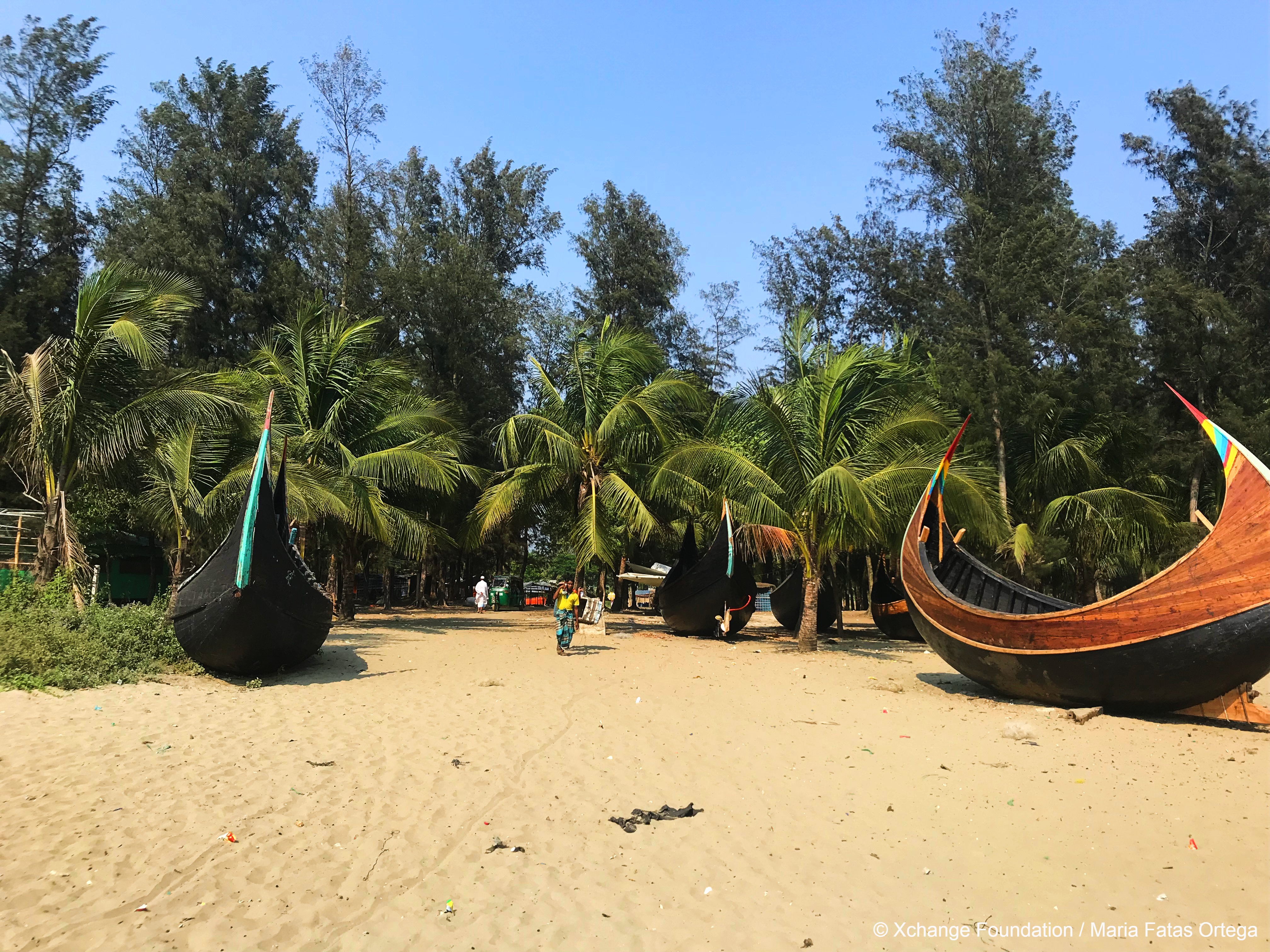
Methodology & Research Implementation
Research Design & Data Collection
In late April 2019, Xchange conducted in-depth interviews with Rohingya parents whose children were no longer living with them. The interviews were carried out with the use of a semi-structured interview guide which was informed by informal discussions with Rohingya refugees familiar with the topic of parent-child separation among their communities.
The sample comprised of ten Rohingya mothers and one Rohingya father of children who were either given up for adoption at a young age (three cases), given to another family for labour (seven cases), or had gone missing (one case). The sample included both ‘old’ Rohingya – those who arrived in Bangladesh prior to the 2017 military crackdown in Myanmar – and ‘new’ Rohingya – those who arrived in Bangladesh following the 2017 military crackdown. Those interviewed were between the ages of 27 and 55 and their children were 12 years old or under at the time the separation occurred. All participants’ names have been replaced with pseudonyms.
| PARTICIPANT | CASE | |
|---|---|---|
| Fatima | Gave her son up for adoption | |
| Baanu | Gave her daughter up for adoption | |
| Hafsa | Has a daughter involved in labour | |
| Khadija | Has a daughter involved in labour | |
| Jamila | Has a daughter involved in labour and a son who was involved in labour in the past | |
| Halima | Had a son gone missing | |
| Hasina | Has a daughter involved in labour | |
| Sameera | Gave her son up for adoption | |
| Shahidah | Has a daughter involved in labour | |
| Rumana | Has a son involved in labour | |
| Jafar Alam | Has two daughters involved in labour |
The interviews were carried out during a two-day period at an undisclosed location in Shamlapur, Cox’s Bazar. Participant recruitment was done with the help of a block majhi. The participants were informed in advance that a team of researchers was interested in understanding why their children were no longer living in their household. They were informed that participation in the interviews was voluntary and that they had the right to withdraw from the study at any time. Before starting the interviews, participants gave their verbal consent for taking part in the study.
The data collection team was comprised of five people: two Xchange researchers, two Rohingya cultural mediators, and a videographer. The cultural mediators undertook a two-day ad-hoc training session, where they were trained in interviewing techniques, ethical considerations during research, and were instructed on how to address sensitive topics. Each interview was conducted by one researcher with the help of one or both interpreters; to achieve a higher level of rapport between researcher and participant, and facilitate more accurate interpretation, both cultural mediators were present for the majority of the interviews.
All interviews were carried out in Rohingya language and were audio recorded. Once the data collection was finished, the interviews were translated from Rohingya to English and transcribed verbatim. The transcripts were subsequently coded and analysed thematically.
In addition to the written analysis, the research team aimed at providing awareness on the issue by filming the interviews and creating a short video-presentation of the findings. Verbal consent from participants was collected explicitly for the videos.
Limitations
With only a few days available to the research team to conduct all interviews, time constraint was the biggest limitation of the study. Moreover, questions and replies were quickly translated from English to Rohingya and from Rohingya to English during the interviews. Hence, maintaining the flow of the interview and building rapport with the interviewees was a challenge in some of the interviews.
None of the 11 participants withdrew from the study prematurely. However, a twelfth interview was initiated but stopped due to the participant’s challenge in understanding the purpose of the interview and the questions. Before that, another woman was turned away before the interview started as she did not fit the criteria of the target population.
Due to the nature of the study, some of the questions asked were highly sensitive and it is possible that social desirability bias was present as a way for the interviewees to preserve their own personal image or that of their community.
Video-presentation of the findings - ©️ Xchange Foundation 2019
- Chapter I: Reasons behind the separation (01:57)
- Chapter II: The process (05:50)
- Chapter III: Reactions to the separation (10:23)
- Chapter IV: Children's conditions (15:48)
- Chapter V: Money (18:07)
- Chapter VI: Rethinking the decision (19:49)
- Chapter VII: Final thoughts (23:39)
Findings
Family Situation
Most participants described their families loosely as single parent families, where the mother primarily took care of the children, did housework, and rarely worked outside the home. Some were still married at the time of the interview whilst others had been widowed. All families, however, shared a common characteristic: there was no active paternal figure engaged in employment in the family - either the father had died or was too old or sick to be able to financially contribute. The only male participant, father of eight daughters, was one of the latter cases.
Jafar Alam
Including Jafar Alam, seven participants had given at least one of their children – for the majority, the oldest one – to another family to work for a living either in Shamlapur or in another city in southern Bangladesh. According to their parents, these children had hoped for a bright future before being sent to work; they all wanted to go to school, study, and aspired to become tailors, teachers, or doctors. However, their families’ socio-economic and immigration status left these parents unable to fulfill their children’s dreams.
Rumana
Jafar Alam
In both the adoption and the missing child cases, all the children involved had older siblings whom their birth mothers were already struggling to raise due to their economic circumstances.
Case Study 1: “I wouldn’t have been able to survive with my newborn child.”
Fatima, a mother of two, moved from Cox’s Bazar to Shamlapur a couple of months before the interview took place. She described her husband as an alcoholic who was abusive towards her whilst she was pregnant with their third child: “He [used to] beat me when I was pregnant.” Despite the circumstances, Fatima still hoped he would help her raise their third child. However, and whilst in her seventh month of pregnancy, her husband died. The news shattered her hopes. Not knowing where to turn for support, and with no ‘father, mother, or brother’ to help her, Fatima 'was forced’ to give her newborn child to another family.
According to Fatima, the adoption process was quite straightforward. She recalled being visited by her cousin one day at her home. He knew a man who could not have children of his own and wanted to adopt a boy. In her desperation and hoping she would be able to finally provide a better future for her other two children, Fatima gave in to the promises of that man.
However, these promises turned out to be false. Fatima lost contact with the man she gave her son to only a few months later:
Reasons behind separation
The restrictions in employment opportunities for Rohingya in Bangladesh, and the lack of financial stability that these restrictions bring, were a common source of distress for participants and their families. The inability to cover daily living costs was the reason that participants had considered giving away their children - either permanently through adoption or temporarily in child labour - in order to sustain their families. Displacement from Myanmar was identified as one of the root causes of the participants’ families’ situation. Jafar Alam, for example, explained how in Myanmar his family had had a consistent income that allowed him to provide for his family, but after arriving in Bangladesh, he lost everything, which meant his daughters had to work to save money for their own weddings. The ‘old’ Rohingya that were interviewed explained how the 'new’ Rohingya had helped them indirectly by bringing attention to their situation; some now received food relief, which they had not in the past. However, they reported the rations that they received were not enough to cover the needs of their families. Only three participants (Fatima, Jamila and Jafar Alam) reported receiving support in the form of food aid:
Fatima
Gender norms and dynamics played a considerable role in all participants’ decisions: all participants considered a male family member – generally a husband in the case of mothers, and a brother in the case of daughters – as the primary breadwinner of the family. The family’s lack of resources and financial security were thereby identified as a direct consequence of having no male family member engaged in employment.
Hafsa
Shahidah’s and Rumana’s husbands were ill, which put a further strain on the mothers’ ability to provide for their children.
Shahidah
The three interviewees whose children were given up for adoption supported that they would have been unable to raise these children alongside the ones they already had without the help of another adult. Had their lives been different in any way, they all agreed that they would not have taken the same decision.
Baanu
Baanu also explained that it was easier for her to give her daughter up for adoption when she still was only a few days old. She said she would not have been able to give her daughter up had she grown older, ‘because of [her] love for her’. Sameera had given birth to twins. Feeling unable to take care of both children alongside her elder one, she decided that in order to provide for them in the best way that she could, she had to give up one of them despite them being male.
Sameera
Moreover, a belief all participants shared was that their children would have more opportunities in the future if they left the family home. This played a key role in the explanations they provided as to why their children were not with them anymore.
Jamila
Baanu
The perception that the interviewed parents would maintain regular communication with their children was an incentive for them. For some, like Jafar Alam and Khadija, knowing in advance and trusting the family for which their child would work, provided them with an extra level of assurance that their child would be taken care of. Those with a strong external locus of control called upon divinity to justify their own actions:
Rumana
Marriage was frequently referred to as a motivation to send female children to work. With their children growing older, parents of girls approaching puberty thought of marriage as a means of releasing some of the financial burden placed on the family; this was the case for Khadija, Jafar Alam and Shahidah. However, as Khadija explains below, a wedding costs more than they could afford.
Khadija

Case Study 2: “To rescue myself I gave them [away].”
Jamila, a mother of four with no husband and no one to support her, had been struggling to raise her children on her own. While living in the Shamlapur refugee camp, she fell ill and had to be taken to hospital; alone and in need of a blood transfusion, she was faced with a dilemma. She reportedly met a couple of Bangladeshi tourists who promised to help her get back on her feet in exchange for one of her children as their servant.
Jamila knew that even if she was in good health, she would still struggle to survive and take proper care of all her children. Her case is unique as her children played a big role in the decision-making process. Though young, they were aware of their situation; Jamila explained how her daughter gave her the courage she needed to make the decision to send her children away:
Unable to think of an alternative, and with her life on the line, Jamila decided to trust people she barely knew and accepted their offer feeling grateful for their generosity. Though grateful, she showed remorse for her decision.
Separation process
None of the interviewees who gave their baby up for adoption had known the adoptive family in advance. After giving birth and making their intention of giving away their babies known, they were approached by individuals who were looking for a child to adopt. Fatima, Baanu, and Sameera gave their children to strangers, without any formal procedure taking place.
Sameera
Two of the participants who had given their children away for labour (Hafsa and Khadija) were approached by their neighbours who asked for their daughters to help with housework, which included tasks such as washing clothes and preparing food. With their children living in their neighbourhood - and with Hafsa’s daughter working during the day and returning home in the evening - both mothers’ decisions were reportedly easier than having to give their daughters to someone they barely knew risking not seeing their children again. Unlike Hafsa and Khadija, participants took their children to the ‘master’’s house far from their home to give them up to work. In the remaining cases, the 'masters' came to the family home to take the children:
Hasina
Four participants had discussed with their friends and neighbours their decision to give their child away in advance. They stated that their friends supported their decision as they had known about their complicated circumstances. Some even encouraged them; Fatima supported that her neighbours’ reactions played an important role at the time, as she was quite hesitant as to whether to go through with it or not.
Fatima
Others, like Hafsa and Shahidah, decided to avoid influence over their decision by a third party, as well as the potential criticism and social stigma that might come with such a decision.
Shahidah
Moreover, most participants had not discussed anything with their children prior to sending them to work. What felt like a normal day to most of the children turned out to be the last day living with their younger siblings and parents; interviewees reported their children spent that day playing in the streets, doing chores or going to madrasah. Unsurprisingly, the children were not happy with their parents’ decision, but despite their opposition none of the participants mentioned this as a factor that made them reconsider their decisions.
Hasina
Rumana
For some interviewees’ children, proximity to their home and the ability to see their families was often perceived to have played a positive role in them accepting their parent’s decisions.
Khadija
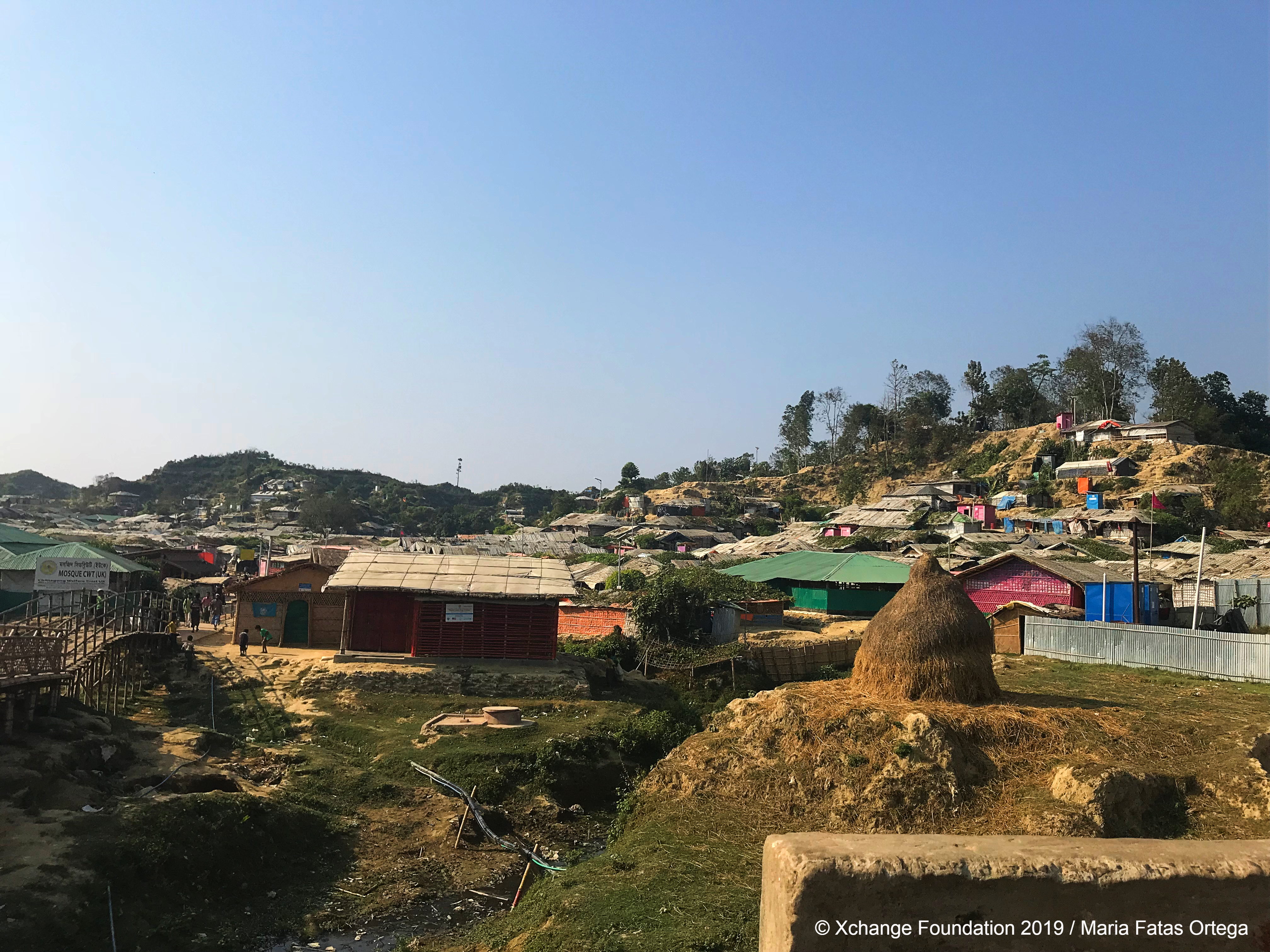
Contact after the separation
Communication after the parent-child separation between mothers and adoptive families had been non-existent in all three adoption cases, despite ongoing communication having been promised to the mothers by the adoptive families in advance.
Sameera
In the child labour cases, participants (Khadija, Jamila, Hasina, Rumana, and Jafar Alam) stated they were in regular contact with their children at the time of the interviews. However, the frequency of communication was different in each case. Whereas Hasina reported speaking to her daughter every Friday, the rest did not have a set schedule. Both Jamila and Rumana had spoken to their children ten days before the interview took place.
Rumana
With regards to talking to their children in person, the parent’s gender seemed to play a role in the visiting arrangements. Jafar Alam and Khadija’s husband were the ones to visit their children. Jafar Alam reported visiting his daughters the most:
Jafar Alam
On the other hand, some mothers reported being visited by their children. Hafsa’s case was the only where the child would come home in the evenings. Jamila reported that her daughter would visit her whenever there was an emergency.
Jamila
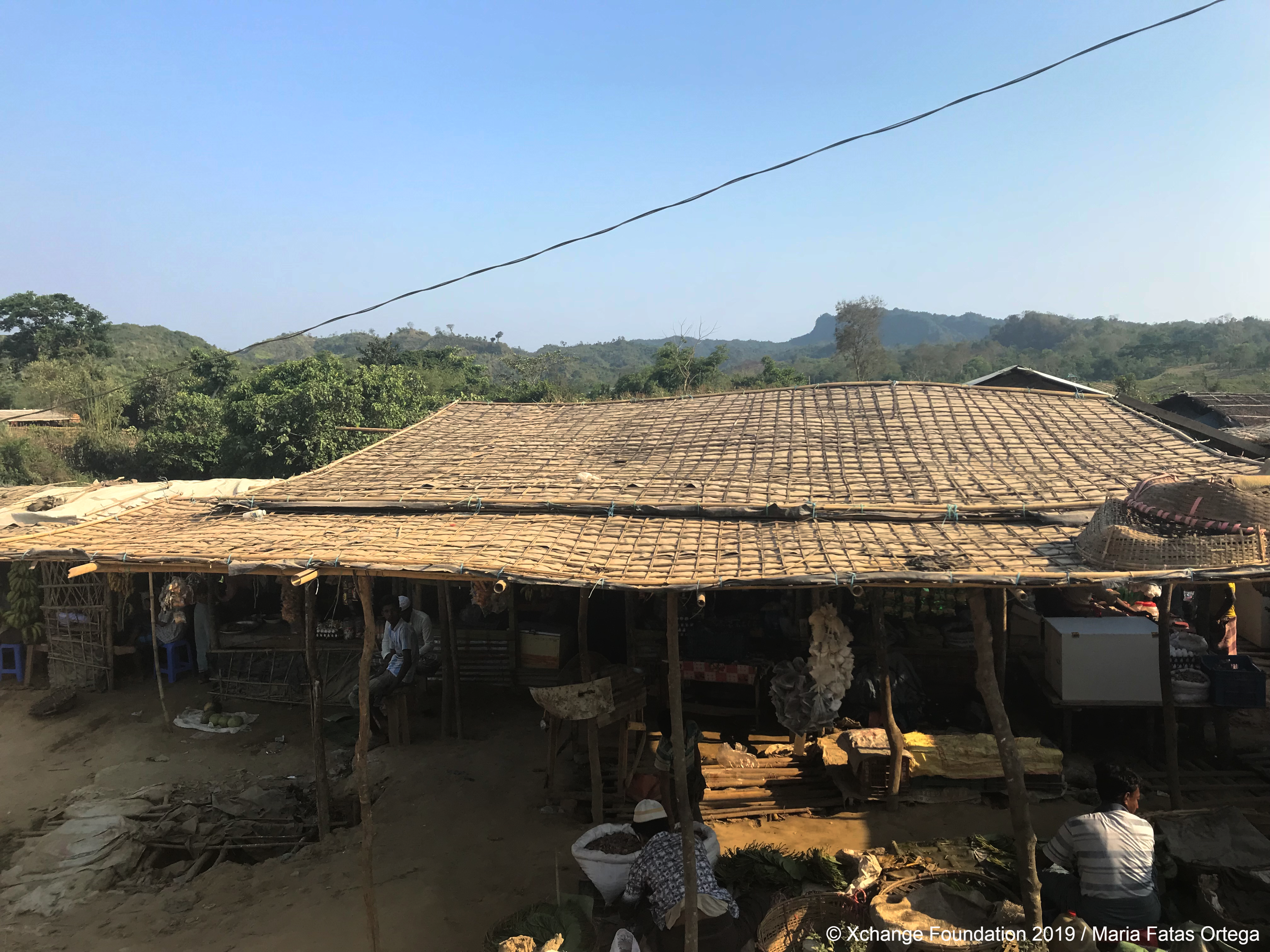
Case Study 3: “I sent him to go shopping. Where did he go?”
Halima, a mother of four with an ill husband, lost her son five days after arriving in Bangladesh. It was August 2017, and like thousands of others, she had fled Myanmar trying to escape persecution.
She safely made it to Bangladesh with her children and husband, and five days after settling into the Shamlapur refugee camp, her ten-year-old son went to the local Bazar to get some groceries. That was the last day she saw him.
Desperate to learn more about her son’s whereabouts, Halima made several attempts to find her son. The one thought dominating Halima’s mind was that this situation would not have occurred had they not been forced to escape their home country.
While being reminded of the child she no longer has, and with a husband unable to work due to his illness, Halima struggles to make ends meet in the Shamlapur refugee camp. She had not received any support or assistance since her son went missing.
Child’s current location and condition
None of the three mothers who gave their children up for adoption knew the current location or condition of their children, as communication between the families was non-existent. However, Fatima thought that her daughter might be in a good condition as she was adopted by a wealthy family. Sameera was told that her child was taken to some place in Teknaf but she did not know where her child currently was. All three participants, together with Halima whose child was still missing, mentioned this lack of communication and information as a source of pain.
Sameera
All parents involved in child labour cases were aware of the current location of their children. At the time of the interviews, Hasina and Shahidah’s children were working in Chittagong, Rumana’s son was in Cox’s Bazar, Hafsa’s and Khadija’s children were in Shamlapur. Jafar Alam reported one of his daughters was working in Shamlapur and another one in Chittagong. In regards to the type of work, all parents believed their children spent their time carrying out mainly manual labour and household chores.
Hasina
According to most parents who gave their children away for labour, their children were in good health at the time of the interviews. A few, however, reported knowing that their children suffered from a medical condition, most likely an outcome of the type of work they conducted. For instance, Hafsa’s daughter had been unable to go to work in the last few months due to gout, a type of arthritis-joint pain in the big toe. One of Jafar Alam’s daughters also suffered from arthritis caused by manual labour. Khadija reported that despite her daughter not having a detected illness, she was weak and had a low appetite. In the case of Jamila, both her daughter and son were originally sent to work. However, since her son developed ‘psychological problems’ she had to bring him back home and only her daughter was currently working. Nevertheless, Hafsa, Khadija, Hasina and Jafar Alam believed their children were in good conditions overall; their children had told them that their master allows them to ‘eat good food’;
Khadija
On the other hand, Shahidah voiced concerns for her daughter’s wellbeing. Even though her daughter’s masters had attempted to reassure her that her daughter was ‘well’ and ‘happy’ over the phone, Shahidah’s daughter’s story was quite different.
Shahidah
Despite this, Shahidah did not contemplate bringing her daughter back to her house, as she relies on the money her daughter makes.
Shahidah
Both Jamila and Rumana reported not knowing exactly the conditions that their children were in. Jamila believed her daughter’s master does not let her eat the same food as them, a concern also shared by Rumana for her son:
Rumana
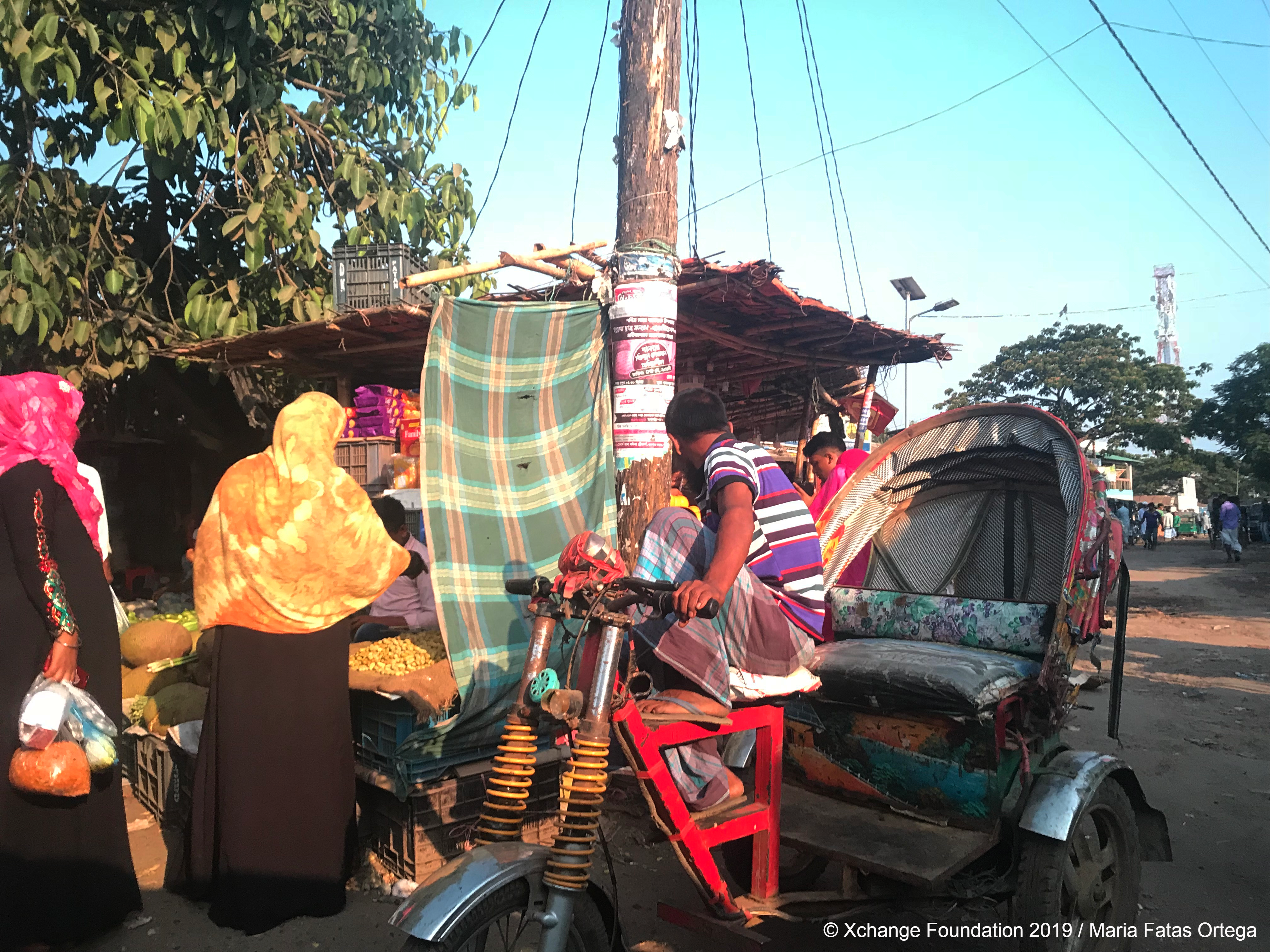
Money
In the cases of separation through adoption, financial gain was not necessarily a driver. Two of the participants (Baanu and Sameera) reported giving their children up for adoption for no money in return, and when asked about financial compensation, they mentioned reasons other than money as drivers in their decision-making process. One birth mother (Fatima), however, reported being promised to be supported financially by the adoptive parents, together with her two older children. As explained in Case Study 1, continued support did not occur. Nonetheless, its promise played a decisive role in the adoption process.
Of all eight children (Jafar Alam had two daughters employed) who were involved in child labour at the time of the study, six were reported as receiving monthly salaries regularly. All salaries ranged from between 1000 to 2000 taka per month (11 to 21 euros). Although most children had been working for over a year, Hasina and Jafar Alam were the only ones that reported their children’s salaries increased after the first year of work. Jafar Alam’s oldest daughter received a 100% salary increase (from 1000 to 2000 taka, or 11 to 21 euros) after completing her first year of work, whereas Hasina got a 33% increase (from 1500 to 2000 taka, or 16 to 21 euros), in addition to a bonus of 3000 taka (or 32 euros) for Eid.
One of the participants (Hafsa) reported that her daughter was being paid irregularly, usually in a range of 1000 to 2000 taka (or 11 to 21 euros) ‘as wish of her [master]’. Another participant (Jamila) reported only being made a one-off payment of 2000 taka (or 21 euros) followed by an informal promise, which has resulted in her daughter working for free:
Jamila
Overall, the money received from their child’s labour was considered to have contributed to the betterment of the family’s situation in all but one (Jamila) of the cases. Jafar Alam, for instance, indicated that his daughters’ salaries have had a positive impact on the family’s livelihood:
Jafar Alam
Reactions after the separation
All mothers who had given their children up for adoption reported speaking to their neighbours about it afterwards. In order to explore the social perceptions around these cases, participants were asked what their friends’ and neighbours’ reactions to them giving away their children were. Sameera reported being told:
Sameera
Baanu also said that some of her neighbours agreed with her decision, arguing that she already found it hard to make ends meet with the two children she already had. However, she added that sometimes people tell her that it would have been better if she kept her daughter with her:
Baanu
Parents involved in child labour situations also reported talking to their neighbours about their children. Often there was social stigma attached to their decisions; participants were mostly criticised for having given their children away. Jafar Alam preferred not talking to his neighbours about his situation as ‘[talking] to them about it will make it a problem for [him]’. Hafsa stated some of her neighbours believed that her daughter should have been married instead of sent to work as she was already a teenager. Neighbours of Khadija voiced similar opinions:
Khadija
Khadija, Jamila, Shahidah, Rumana, and Hasina said their neighbours brought up the fact that they had sent their children to work during arguments.
Shahidah
Rumana
Despite this, for some, sharing their concerns with their neighbours was a means of alleviating their pain. For instance, Shahidah relied on her neighbours for emotional support:
Shahidah
Though voluntary parent-child separation may be stigmatised by communities, there is also the fear of a trickle-down effect occurring in these circumstances. Most participants were familiar with other cases of parents who had sent their children for work after they did. Jamila, Jafar Alam, and Hasina knew of people who had followed in their footsteps.
Jamila
Despite this, almost no participant recalled ever being asked for advice by others about sending their own child for labour, with Shahidah being the only one approached by others willing to follow in her footsteps six months prior to the interview:
Shahidah
In the case of adoption, both Baanu and Sameera said no third party had spoken to them about wanting to follow in their footsteps, though Sameera heard that other parents in similar situation to her had given their children for adoption.
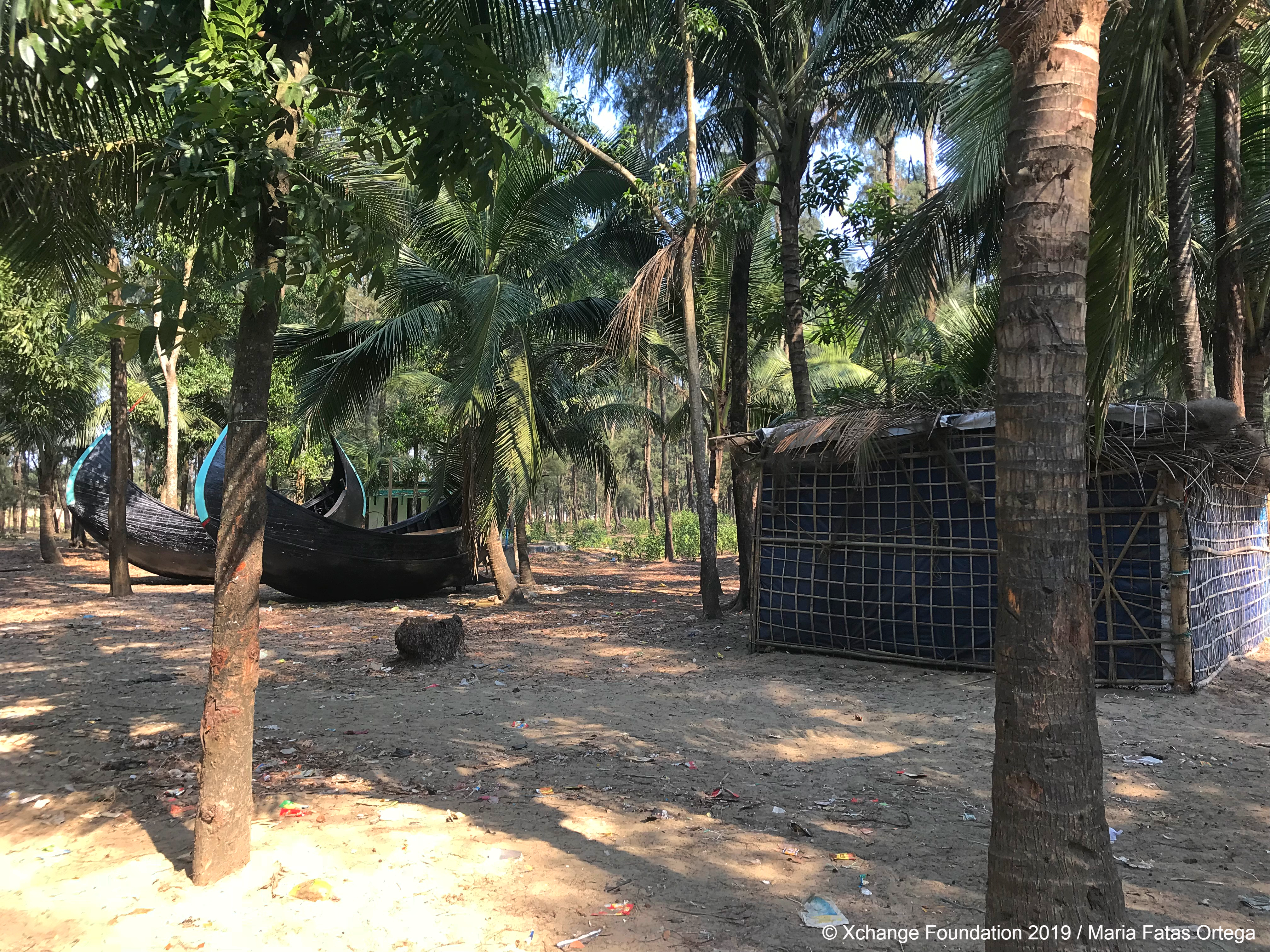
Reporting and assistance
Most participants had never been approached by an NGO or government agent interested in learning about their situation; they had only spoken to neighbours or friends. This was also true of birthmothers who gave their children up for adoption, who reported that they did not contact authorities or NGOs even after communication with the adoptive families was stalled or prevented. Jamila was the only participant who had been visited by an IOM worker, who referred her to the Kutulapong MSF Hospital; her visit was not followed up. Halima reported attending a mental health center shortly after her son went missing, but she indicated this was a general informatory session, not specific to her case. No other attempt was made to offer her any help. Overall, interviewees had not received any sort of support specific to their case from official or unofficial actors.
Case Study 4: “I did not do right, I say it myself…”
Jafar Alam was a father to eight daughters. Getting older and battling illness, Jafar Alam felt the pressure to provide for this family in a country that did not provide him with many opportunities. In Myanmar, he had worked as a shopkeeper; however, following the marriage of his eldest daughter, he ran out of money.
With no son to work outside of the home, Jafar Alam relied on marriage as a way to provide his daughters with a future, as well as alleviate some of the financial pressure from his younger daughters still living at home. Marriage, however, is expensive as the bride’s family ought to pay a dowry to the groom. By sending some of his daughters to work he was able to provide better for his family while saving money for the marriages.
Admitting he did not make the right choice for his daughters, he identified his desperation as the main reason behind his decisions.
Rethinking the decision
Overall, participants’ memories of the day they were separated from their children were vivid; they became emotional when asked to recall the process.
Baanu
Sameera, Khadija, Hasina, and Rumana expressed that their ‘hearts were burning’. Some conveyed that their feelings of sorrow would get stronger when seeing other children the same age as their own children. They often stated that even ‘looking at their other children’ or ‘seeing children of their child’s age in the streets’ made them feel regretful and powerless.
Fatima
Rumana
Even though in general interviewees asserted feeling forced to act due to their circumstances, a few specifically disclosed knowing that their decisions were not ‘the best’ or ‘right thing to do’.
Jamila
Regretful about giving away their children but simultaneously unable to revoke their actions due to their financial insecurity, some participants felt the need to call for support from the international community.
Jamila
Jafar Alam
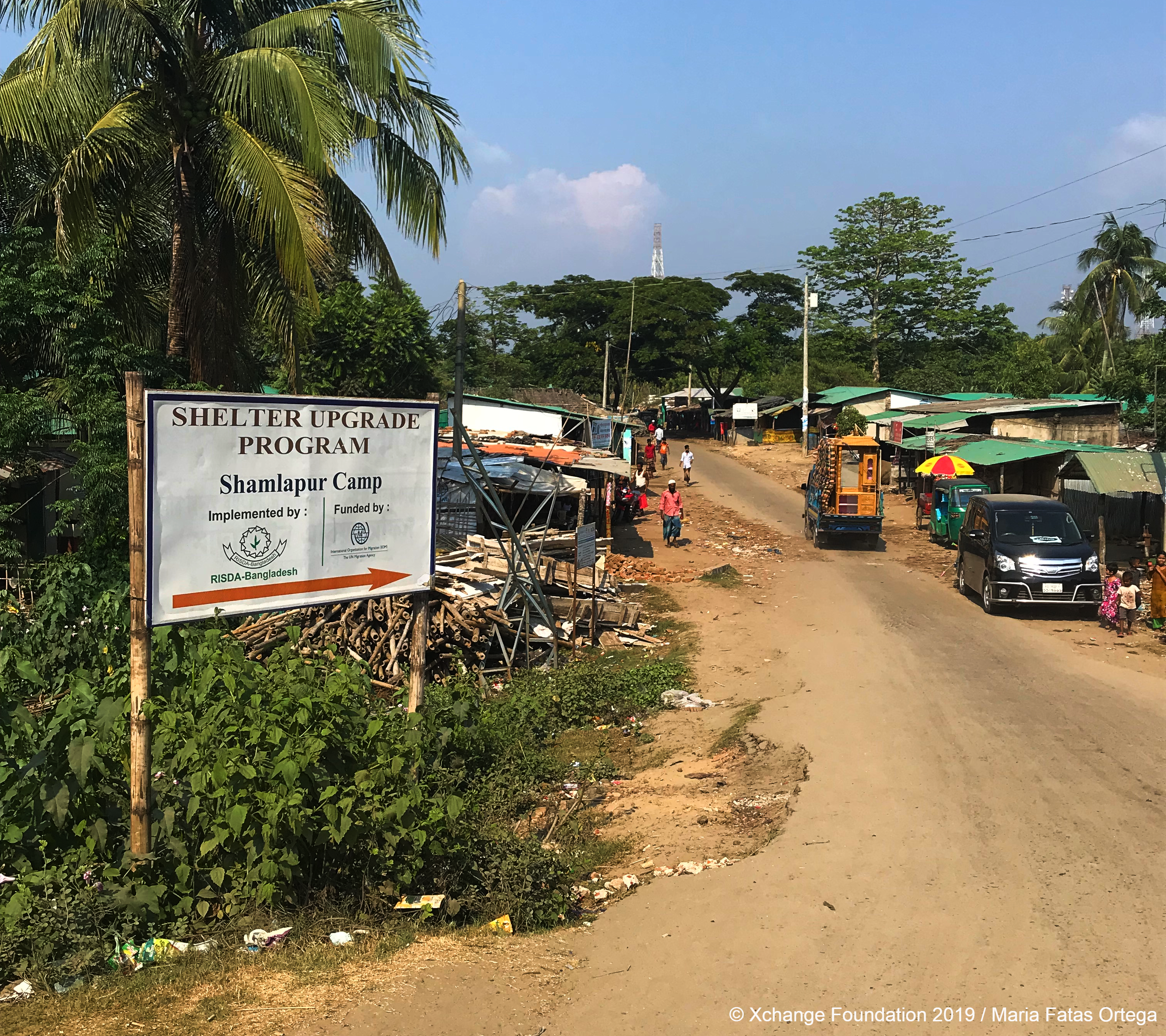
Conclusion
Building on previous research, the objective of this study was to explore parent-child separation in Bangladesh by focusing specifically on cases of voluntary separation. In doing so, Xchange aimed to further understand the reasons and circumstances that underpin the parental decision to send their children out to work or to give their babies up for adoption.This research supports the fears that Rohingya children may become a ‘lost generation’, as highlighted by humanitarian organizations present in the camps.
The findings are based on testimonies from three Rohingya birthmothers who had given their youngest child up for adoption, six mothers and one father of Rohingya children who were involved in child labour, and one woman whose son had gone missing from the camp. Participants belonged to families where no male adult was engaged in employment, due to sickness, old age or absence. As Rohingya women rarely work outside of the home, their contribution to the family’s disposable income tends to be much lower than that of their male counterparts. Gender norms therefore played a crucial role in the parent’s motivation to send their children to work; out of the eight children represented in the cases of child labour in this study, seven were female and one was male. With Rohingya girls being at higher risk of sexual exploitation and trafficking, this is a concern.
As this report has put forward, adoption or child labour were never the parent’s first choice for their children; all participants in this study expressed feeling forced to make such choices because of their lack of resources. Forced displacement to Bangladesh was identified as the root cause of participants’ economic situation. Some of the participants, both in cases of adoption and child labour, also voiced their opposition to other parents following in their footsteps, thereby exacerbating the desperation that guided their decision.
Baanu
While all parents of working children were aware of their children’s location, this was not the case for the birthmothers of children that were given up for adoption. All adoptions were carried out in an irregular manner, with exchange of money being present in one of the cases. All three adoptions took place without the knowledge or intervention of state or independent actors, meaning the child’s best interest could not be ensured, thereby contravening UNHCR’s Policy on Adoption of Refugee Children.
All parents of children involved in child labour believed their children were engaged in household chores, and many voiced concerns for their conditions; four of the parents reported that their children were suffering from physical and psychological illnesses. Parents reported that children were not happy working and that their conditions were not good; some would work long hours, with no days off, and with restricted access to a phone. Despite acknowledging this, parents expressed having no alternative.
Most of the children involved in labour were paid regular, albeit low, salaries; with most ranging between 1000 to 2000 taka per month (11 to 21 euros). Hafsa’s child’s salary, however, was always at the discretion of the master, and Jamila’s daughter was not paid at all – an informal promise of gold earrings kept Jamila from bringing her daughter back.
All parents stated that they would choose a different path for their children if given an alternative, with most of those involved in cases of child labour specifically mentioning ‘school’. Many also shared the desire to fulfill their children’s ‘hopes’ if given the chance.
Jamila
Overall, this research brought attention to the reality faced by many Rohingya children currently living in refugee camps in Bangladesh. Without access to the formal labour market, insufficient educational opportunities, food insecurity and dire living conditions, many Rohingya parents are forced to give up their children.
Hasina
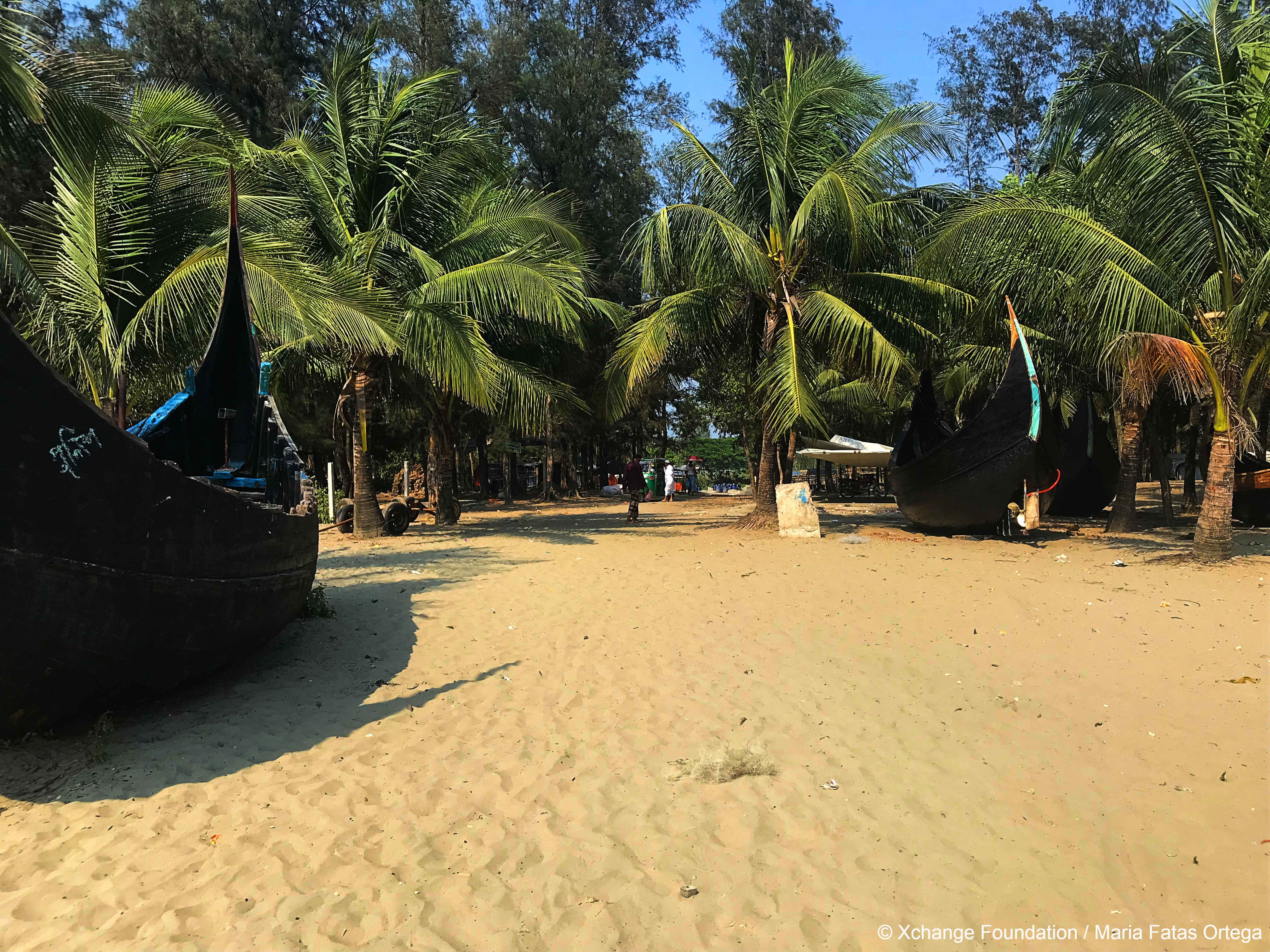
Acknowledgements
Research, Analysis, & Report-writing: Ioannis Papasilekas
Data Collection, Research, Analysis, & Report-writing: Maria Fatas Ortega
Data Collection: Jacqueline Whitmey
Contact Us
As an information and research initiative, we are eager to work with a wide spectrum of stakeholders to exchange information and knowledge.
We are looking for partners and funding organizations to support us in conducting a new round of surveys. Please, feel free to send us your proposals.

Copyright © Xchange.org 2019